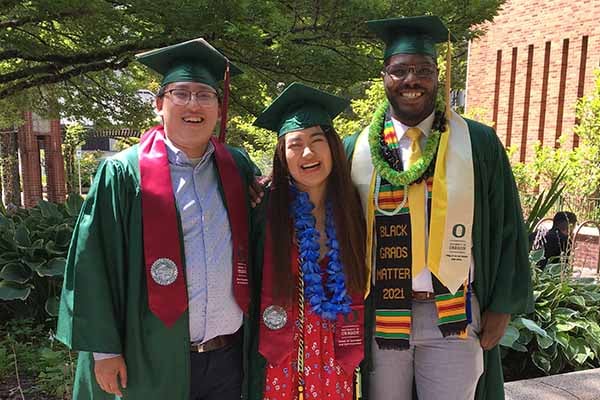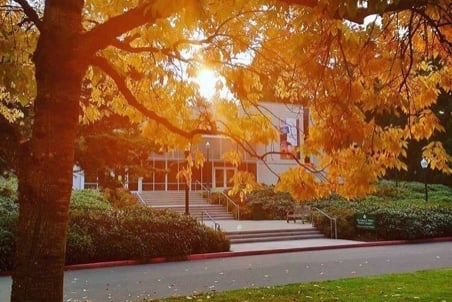History 101: School of Law
When the University of Oregon School of Law was established in 1884, it was a humble, two-year program with three classes per week. The program began at the corner of Second and Yamhill in downtown Portland and attracted many prominent federal and state judges and attorneys to its faculty.
In 1893, Oregon Law saw its first Asian-American graduate, Mitsudoro Yamanak, LLB, and in 1896, the University of Oregon saw its first woman law graduate, Anna E. Wood, LLB.
In the fall of 1915, the law school moved to Eugene into the third floor of Oregon Hall. It transformed into a three-year curriculum with full-time faculty, a robust library, and a university environment. The program was restructured so that new students would enter the law school after two years of college, rather than enrolling directly after high school.

Oregon Law received accreditation in 1923, the first year the American Bar Association accredited law schools.
The third floor of Oregon Hall began to sag under the weight of law books, and the law school was relocated to the University Library. The building was then renamed Fenton Hall, in honor of Judge William David Fenton, who donated 8,000 law books to the university in memorial of his son, Kenneth Lucas Fenton.
During World War II, many of the law students were called to service. Between 1944 and 1945, there was only one graduate from the program. After the war, the school admitted every returning veteran who sought a legal education; there were 26 total graduating law students in 1948, 25 of whom served in World War II.

In 1964, the UO School of Law began offering environmental and natural resource law courses and the Ocean and Coastal Law Center—one of the first in the nation—was established in 1968. Oregon Law’s Environmental and Natural Resources Law Center is now nationally ranked.
The following decade consisted of a lot of change for the law school. In 1970, the law school moved from Fenton Hall to the Law Center at the corner of 11th and Kincaid. In 1972, the school switched to a semester-based system and began holding separate commencement ceremonies from the rest of campus.
In 1981, Derrick Bell was hired as dean of the law school. He was the first African American dean, and he served from 1981–1985. Dean Bell ushered in a new era of Oregon Law with his knowledge of and commitment to civil rights, race, and law intersections. In 2012, the Derrick Bell Lecture Series, a collaboration between the School of Law and the Division of Equity and Inclusion, was named in his honor. Margaret Paris become the first woman dean of Oregon Law in 2006, and in 2017, Marcilynn Burke became the first African American woman to be the dean of Oregon Law.
The Knight Law Center opened in 1999 at the corner of 15th and Agate. The center, which was named in honor of state legislator and The Oregonian newspaper publisher William W. Knight, LLB ’32, houses the School of Law along with the Wayne Morse Center for Law and Politics.

In 2008, Oregon Law began offering an optional Portland-based program for third-year students.
Over the past 139 years, the law school has continued its strong legacy. The University of Oregon School of Law remains the top law school in the state of Oregon and second in the Pacific Northwest. Oregon Law is the only law school in the Pacific Northwest to boast three top ranked programs: Legal Writing (#1), Environmental Law (#9), and Dispute Resolution (#11).
Learn more about the UO School of Law.
-By Peyton Hall, UO Alumni Association Student Associate








